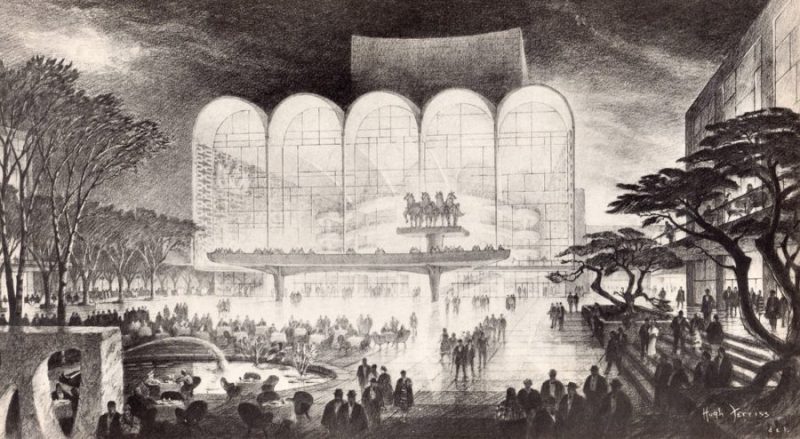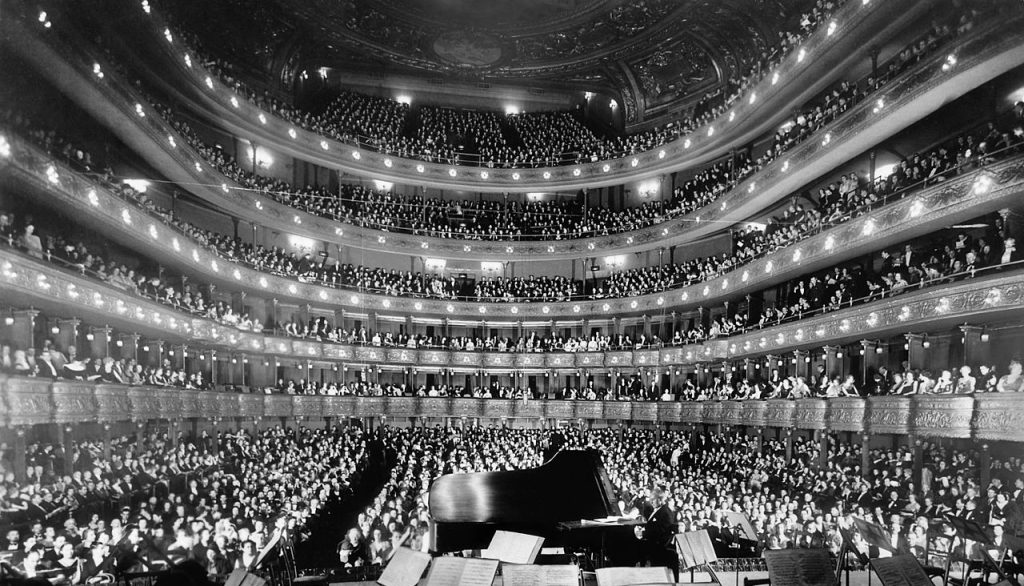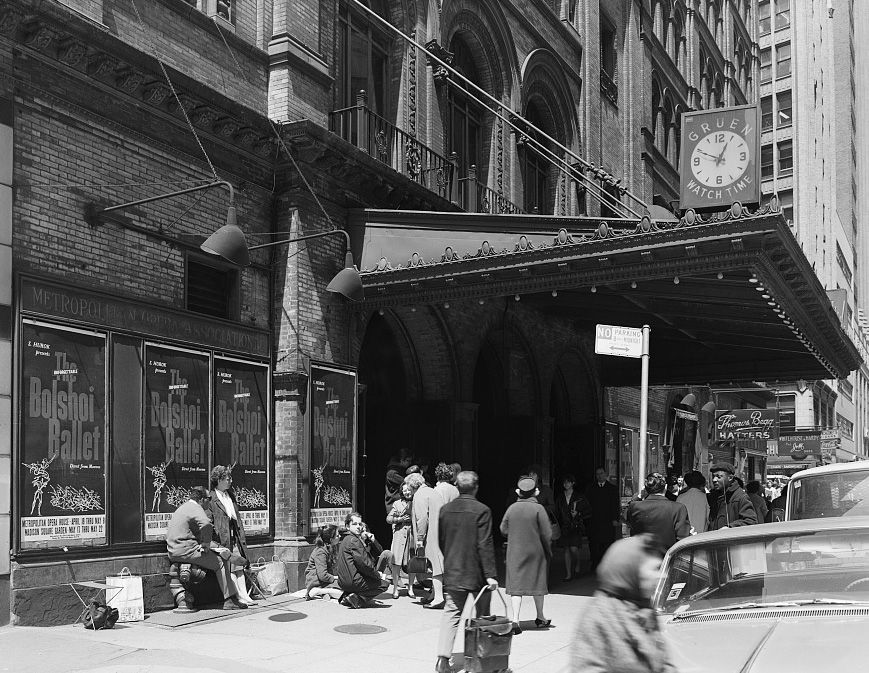
by Steve Cohen
Susan Froemke attempts a multitude of tasks in her latest documentary, The Opera House, and succeeds beyond my expectations. The film was streamed to cinemas worldwide by Fathom Events as part of its continuing series of HD transmissions from the Metropolitan Opera.
Ostensibly, The Opera House seemed to be a tribute to the Met’s home in Lincoln Center, which opened a little over 50 years ago. In truth, it’s much more. This must-see film presents a vivid picture of the New York City that used to be, and a history of urban renewal, sociology, politics and architecture. It’s framed by the on-camera reminiscences of people who worked at the previous Met, of Irish-American and Puerto Rican residents of the neighborhood that was torn down to make room for Lincoln Center, and of soprano Leontyne Price, who starred in the opening night of the new Met.
Nostalgia pervades the two-hour film and awakes memories of my own. I attended many performances in the old house at 39th and Broadway, and I was there for the four-hour closing night on April 16, 1966, which is glimpsed during this film. I remember attending a midnight supper afterwards, where I sat with Giovanni Martinelli, Zinka Milanov and other superstars of the past. It was fun to see principal Met artists asking each other to autograph their programs.
The film stresses the lack of space at 39th Street and shows the tiny lobby and cramped backstage. I remember, also, the hole-in-the-wall executive offices overlooking Broadway. The Met’s assistant general manager and public relations director, Francis Robinson welcomed me when I was merely the manager of a college radio station. That elegant gentleman held court nearly every night in a small press room where he poured drinks and introduced whichever visitors were attending that night to each other, whether they be Martha Graham or Gian Carlo Menotti or a young broadcast journalist.
I happened to be at the 1971 Tosca at Lincoln Center where James Levine made his Met conducting debut and Robinson asked me to stay afterwards and “meet our new young conductor.” There is no mention of Levine throughout The Opera House.
Rudolph Bing, the general manager from 1950 to 1972, is portrayed here as an autocrat with an icy demeanor. That’s true, although he always answered my questions candidly and I admired his dry wit when he criticized some of his own stars. We see Bing campaign for a new home, disparaging the threadbare facilities of the old house. Good memories of that house are expressed by an usher who went on to become the Met’s box office manager, and a child chorister who later became director of the Met’s supers.
The Opera House demonstrates how city planner Robert Moses re-made Manhattan into his idea of a modern Eden and dovetails that with Met board members’ ambitions to erect a newer, grander Metropolitan house. The Rockefeller family and President Eisenhower appear, promoting the Lincoln Center enterprise and, in contrast, we meet families who lived happy lives there and resent the condemnation of their neighborhood. Unlike West Side Story, which was filmed there, the area was not a gang-warfare slum zone.
Drawings, photos and interviews reveal the evolution of Lincoln Center, its changing designs, and the technical problems that threatened the 1966 opening. We learn that architect Wallace Harrison was unhappy with compromises he had to make, which resulted in the new lobby which, almost like the old, is uncomfortably cramped for its purpose. It’s nowhere near as large as what the designer dreamed of.
Near film’s end, a man who worked there reveals that he frequently dreams about opera, and it’s always of the old house. You might infer that I am also partial to the old, but that’s not so. I was privileged to broadcast the first report from within the new Met, before its opening, on National Public Radio, and I feel attached to this day.
The film is an intensely human story, and we’re privileged to see Leontyne Price at age 90, full of vim and humor and still able to sing part of her aria from Antony and Cleopatra in the original key. Most engagingly, she tells how difficult it was to keep her mind on music when appearing with Franco Corelli, because he was so handsome. It’s also sweet to hear her murmur, when Robert Merrill appears on screen, “Oh, there’s Bob.” The Opera House is filled with such emotional moments.
Price’s co-star from 1966, Justino Diaz appears too fleetingly, while it’s good to see reminiscences by old Met standees and by Peter Clark, who was a successor to Francis Robinson as press rep and now heads the Met’s archives.
The film’s director, Suan Froemke, made an earlier impression with The Audition, a look at the intense pressures of the Met’s national auditions in 2007 where young opera singers struggle to succeed in one of the most difficult professions. By happinstance, The Audition included several who have gone on to lustrous careers: Angela Meade, Michael Fabiano and Jamie Barton. Both that film and the new provide gripping viewing.
Below, the interior of the old Met, in 1937 at a Joseph Hofmann concert; and old Met exterior photo by Jack Boucher for Historic American Buildings Survey.

